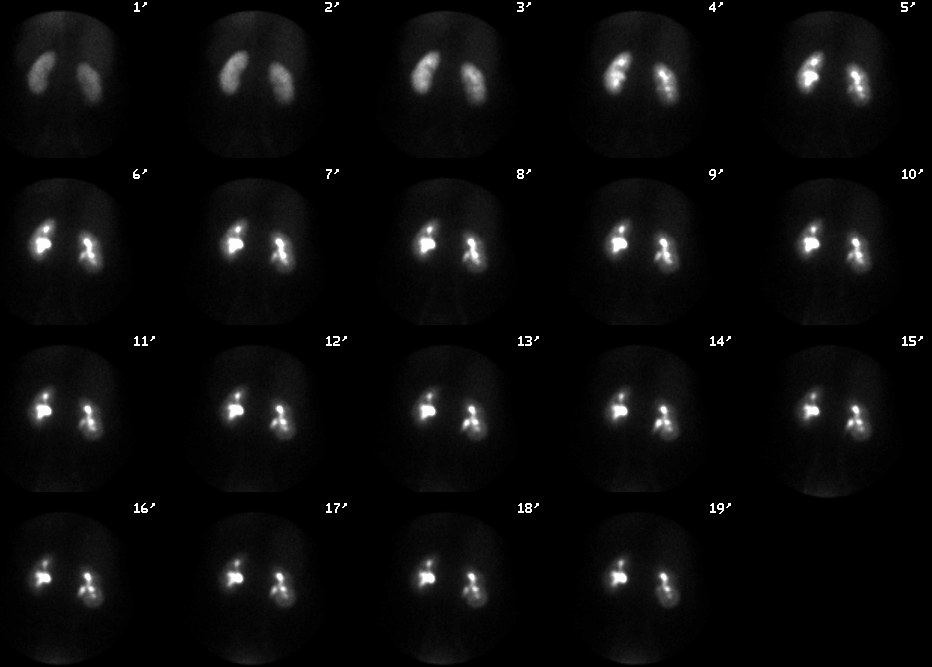Case Author(s): Anton J. Johnson, M.D., Ph.D. and Tom R. Miller, M.D., Ph.D. , 9/13/96 . Rating: #D3, #Q4
Diagnosis: Focal Acute Tubular Necrosis
Brief history:
Hypertension, evaluate renal function.
Images:

Sequential one minute posterior images.
View main image(rs) in a separate image viewer
View second image(rs).
Post-void image, approximately 30 minutes after beginning of study.
View third image(rs).
Post-void image from a study performed six months later.
View fourth image(an).
Renal artery angiogram.
Full history/Diagnosis is available below
Diagnosis: Focal Acute Tubular Necrosis
Full history:
56 year old female with
hypertension and FMD (fibromuscular dysplasia)
involving her renal arteries. Five days prior to the
first renal scan, the patient had undergone
revascularization of the lower of two right renal
arteries for FMD (long segment involvement
precluded treatment with angioplasty).
Radiopharmaceutical:
7.7 and 7.6 mCi Tc-
99m MAG3 i.v.for the 3-25-96 and 9-12-96 studies,
respectively.
Findings:
There is parenchymal retention of
activity in the right lower pole on the first renogram
which resolves by the time of the second renal study six months later.
Flow was normal on both studies. An angiogram
performed prior to revascularization showed long-segment FMD involvement of the lower of two right
renal arteries.
Discussion:
Acute tubular necrosis (ATN) has many causes. In cadaveric renal
transplants the damage is thought to be due to
ischemia occuring during the time between donor death and
transplantation. It usually presents within the first few days after
transplantation and resolves by three to four weeks.
The scintographic findings characteristically include
the combination of relatively preserved renal
perfusion and poor tubular function. Given the
patient's history of revascularization surgery
involving the arterial supply to the right lower pole,
the findings are most consistent with focal acute
tubular necrosis, possibly due to ischemia during the operation.
References: Datz FL, et al: Nuclear Medicine, A Teaching File, St. Louis, Mosby, 1992,
p151. Mettler FA, Guiberteau MJ: Essentials of Nuclear Medicine, 3rd ed. Philadelphia, W.B.
Saunders, 1991, p247. Thrall JH, Ziessman HA: Nuclear Medicine, the Requisites, St. Louis, Mosby,
1995, p305.
Followup:
None
Major teaching point(s):
Although ATN is usually a
diffuse process, it can be focal as illustrated by this
case. The ATN resolved by the time of the second study six months after the revascularization surgery.
ACR Codes and Keywords:
- General ACR code: 84
- Genitourinary System:
8.4553 "Tubular necrosis"
References and General Discussion of Renal Scintigraphy (Anatomic field:Genitourinary System, Category:Effect of Trauma)
Search for similar cases.
Edit this case
Add comments about this case
Return to the Teaching File home page.
Case number: rs011
Copyright by Wash U MO

